Rare And Collectible Vintage Lighters : Vintage Bic Lighter Cover Price List
average value
-
low
-high
-Found 20 out of 93,155 items matching 'vintage Bic cover'
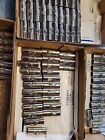
Sold on eBay May 27th, 2024
LOT OF 200 Vtg Lighter Case Unicorn Horse Shoe Heart Turquoise Cover Holder Bic
Beautiful lot of 200 Vintage Western Covers, Turquoise horse, horse shoe, Unicorn, hearts, fit full size Bic. Approx One dozen of each, unless request differently prior to shipping. Condition is excellent unused. Shipped with USPS First Class. Classic original 1970s items. Lot of 50 just $7 each delivered, great gifts, or resale! (Condition: Pre-Owned)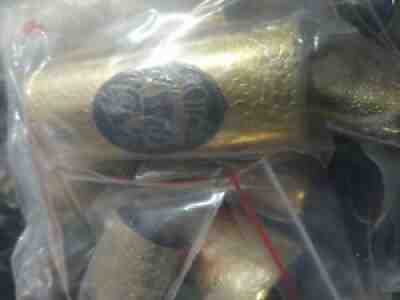
Sold on eBay Feb 06, 2021
Vintage Lighter Cover Case Lot Of 260 Unicorns and 100 Owls Fits Bic Lighter.
Vintage Lighter Cover Case Lot Of 260 Unicorns and 100 Owls Fits Bic Lighter.. Condition is "New".See Pictures for More Details. Free Shipping!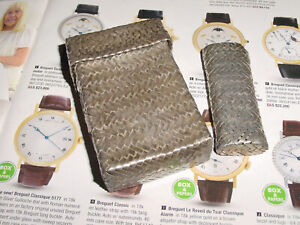
Sold on eBay December 21st, 2023
Vintage STERLING SILVER Basket Weave CIGARETTE pack CASE & BIC Lighter Cover
eBay Very nice set [see photos] as can be seen in photos can hold 100 size cigarettes solid 925 sterling silver Mexico MARKED By designer Thx 4 looking (Condition: Pre-Owned)
Sold on eBay April 26th, 2024
LOT OF 50 Vtg Lighter Case Unicorn Horse Shoe Heart Turquoise Cover Holder Bic
Beautiful lot of 50 Vintage Western Covers, Turquoise horse, horse shoe, Unicorn, hearts, fit full size Bic. Approx One dozen of each, unless request differently prior to shipping. Condition is excellent unused. Shipped with USPS First Class. Classic original 1970s items. Lot of 50 just $7 each delivered, great gifts, or resale! (Condition: Pre-Owned)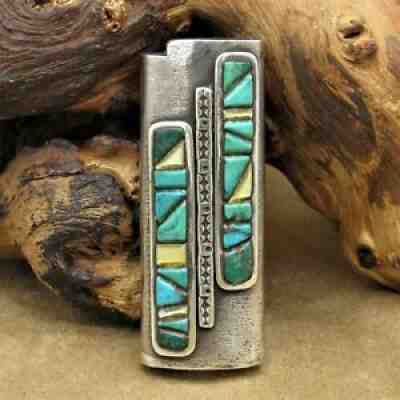
Sold on eBay Sep 05, 2021
Vintage Silver and Turquoise Southwest Lighter Cover
The back has scroll, leaves and silver balls. The front has Turquoise and Gold lip mother of pearl inlay. It is 2 3/4" tall. It will fit the large size Bic lighters. The bottom is stamped LL. The cover is in good condition.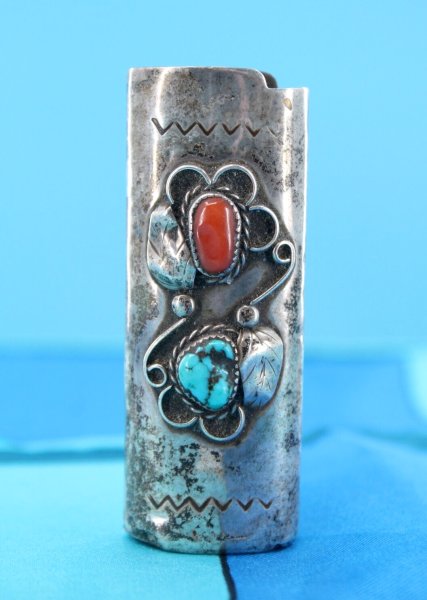
Sold on eBay March 26th, 2025
VTG 70s Navajo Sterling Silver W/ Turquoise & Coral Bic Lighter Cover / Case
VTG Sterling Silver W/ Turquoise & Coral LighterCover / CaseIn good vintage condition, w/ very minor flaws. This is a lighter cover or case for a Bic lighter or similar style. It looks & feels like it is made of sterling silver, but there is no stamp found on it to indicate so. It weighs 16 grams including the stones. It has silver leaves in the center on one side w/ a turquoise & coral stone set in between them. There are also stamped designs throughout case. "Navajo" is printed on the bottom. The only noticed small flaws are that there is some tarnishing throughout & the bottom looks very slightly dented. It's possible there are other small spots or issues that weren't noticed. Please look through photos to get a good idea of overall condition.Please check the measurements before purchasing.Measurements:2.75" x 1" & about .5" wide This is a vintage item so please check measurements to ensure it will fit.Item #7290 (Condition: Pre-Owned)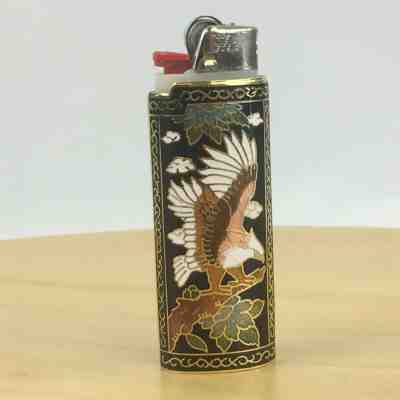
Sold on eBay Jan, 14th 2020
Private Listing ***Lot of 4 Cloisonne Cigarette Lighter Cover Cases***
**private listing for moonba***4 covers - Two black eagle, one blue eagle, one blue floralVery Pretty Eagle Cloisonne (Bic Disposable) Cigarette Lighter Cover CaseThis listing is for black eagle case as shown onlyBlack, White, Green, Brown & more Cloisonne Eagle Pattern<br />Made in Taiwan??, LIGHTER NOT INCLUDED - Cover Only<br />Approximately 2.75" TallUnused, New Old Stock, Vintage?<br />THANK YOU FOR SHOPPING WVSCOTT!Returns are accepted. Buyer is responsible for original & return shipping unless stated otherwise.<br />Feel free to ask any questions before bidding or buying.
Sold on eBay Oct, 10th 2020
Vtg Table Lighter Holder w Sterling Silver Turquoise Southwest Cover Case fo Bic
Vintage Western Table cigarette Lighter Holder, with sterling silver leaf and turquoise design, Mother fits full size Bic. Condition is vintage used. Shipped with USPS First Class Package. ABSOLUTELY GORGEOUS!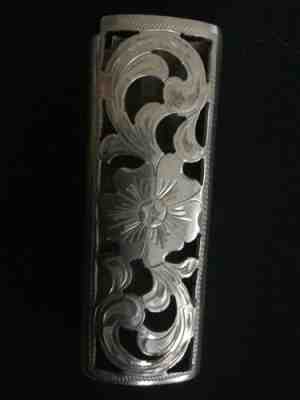
Sold on eBay Dec, 12th 2019
Vintage Lighter Case Cover Holder Sleeve Floral Sterling Fits" Bic Style
Vintage Lighter Case Cover Holder Sleeve Floral Sterling Fits" Bic Style. Condition is Used shows very little wear. I purchased this myself in the 1970’s been put away for years! Shipped with USPS First Class Package.
Sold on eBay Oct, 9th 2020
Vtg Lighter Holder-inlaid Sterling Silver MOP Turquoise Navajo Cover Case fo Bic
Vintage Western cigarette Lighter Holder, with sterling silver and turquoise inlaid design, Mother of Pearl, fits full size Bic. Condition is vintage used. Shipped with USPS First Class Package. ABSOLUTELY GORGEOUS! Small split at top as pictured in last few pictures.
Sold on eBay Sep, 27th 2020
Vtg Cover Case Lighter Holder Turquoise Onyx Sterling silver Bear Paw fits Bic
Vintage Western cigarette Lighter Holder, Silver with turquoise bear paw design, fits full size Bic. Condition is vintage, Shipped with USPS First Class Package.  Absolutely stunning one of a kind!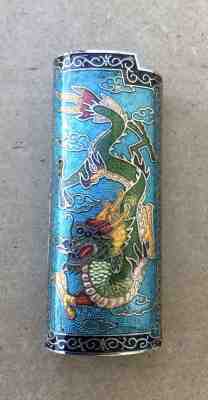
Sold on eBay Nov, 26th 2019
Rare Vintage Cover Case Cloisonne Bic Lighter Holder Asian Dragon Brass Enamel
Some damage from use.Bright pictures were taken outside.Darker pictures were taken inside.Please refer to pics before bidding.Thanks for looking!! 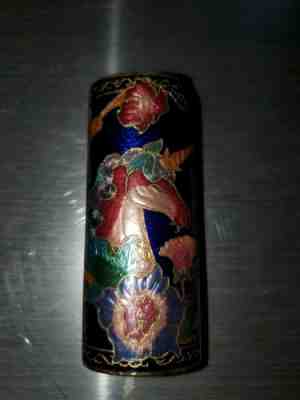
Sold on eBay Jan, 5th 2020
Vintage BIC Unicorn Lighter Cover Cloisonné / Brass - Very Good Condition
Vintage BIC Unicorn Lighter Cover Cloisonné / Brass - Very Good Condition. Condition is Used. Shipped with USPS First Class Package.
Sold on eBay Oct, 6th 2020
Vtg Firestone Turquoise Nickel Silver Cover Case Lighter Holder-Sterling fit Bic
Vintage Nickel Silver Western cigarette Lighter Holder, with sterling silver leaf design around big turquoise and firestone, fits full size Bic. Condition is vintage used. Shipped with USPS First Class Package. ABSOLUTELY GORGEOUS! Rare firestone.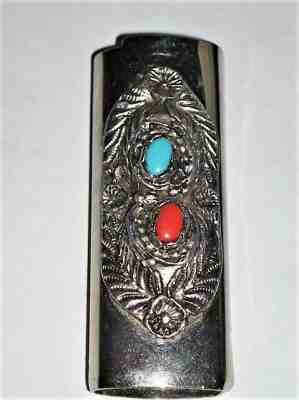
Sold on eBay Nov, 25th 2019
VINTAGE BIC SILVER LIGHTER CASE ORNATE DESIGN WITH TURQUOISE & CORAL STONES
NICE SILVER TONE LIGHTER COVER OR CASING WITH TURQUOISE AND CORAL STONE (NOT SURE IF REAL STONES OR NOT, KNOW NOTHING ABOUT TURQUOISE CORALS) br />ORNATE WORK SURROUNDS THE STONES THAT LOOKS LIKE STERLING BUT CANNOT DOCUMENT SUCH. YOU CAN SEE IN MY PICTURE, THE ORNATE DESIGN WORK SITS UP HIGH ON CASING, NO CHEAPIE. IT'S A STUNNING PIECE FOR ANYONE WHO USES A BIC STYLE LIGHTER! LIGHT RESIDUE OF A STICKER ON BACK THAT MIGHT BE REMOVED WITH "GOO-GONE"--SO SLIGHT IT'S NOT NOTICED WHEN HELD - AND WHO'S GOING TO SEE IT ANYWAY WILL PROBABLY WEAR OFF WITH YOUR CONSTANT HANDLING.<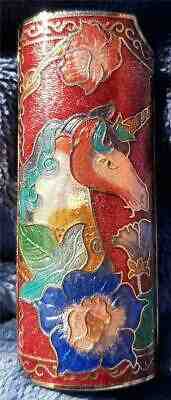
Sold on eBay Nov, 4th 2019
Vintage BIC Unicorn Lighter Cover Cloisonné / Brass - Very Good Condition
BIC UNICORN LIGHTER COVER Cloisonné / Brass Vintage - Really Good Condition Beautiful Cloisonné / Brass Lighter Cover! Unicorn and Flower inlaid design on both sides... See Pictures! Red background with open bottom! Buy Now Before It's Gone! Condition: Used - Very Nice Condition! See Pictures for Best Description Vintage BIC Unicorn Lighter Cover Cloisonné / Brass - Very Good Condition Vintage BIC Unicorn Lighter Cover Cloisonné / Brass - Very Good Condition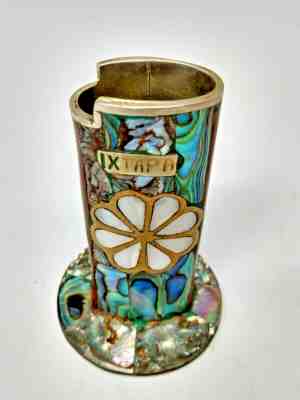
Sold on eBay Oct, 4th 2020
Silver, Mother of Pearl and Abalone wsith wood inlaid Lighter Case Sleeve
Vintage Mexican Silver, Mother of Pearl and Abalone with inlaid wood Lighter Case Cover Holder Sleeve on base ;Wonderfully decorative and fits any bic style lighter..<br />2 3/4" tall on 1 3/4" base..in wonderful , decorative ..neat item...<br /> Contact us should you wish to combine purchases. We have other related items at our Ebay shop. Save on shipping just send us a message.. All our listings are items we acquire via estate sales or auctions. See our other listed items. Visit our store "Thrifty Ways" here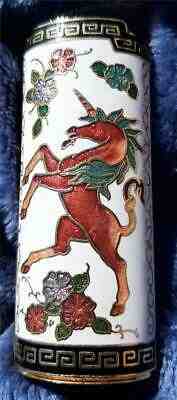
Sold on eBay Nov, 3rd 2019
Vintage BIC Unicorn Lighter Cover Cloisonné / Brass - Very Good Condition
BIC UNICORN LIGHTER COVER Cloisonné / Brass Vintage - Very Good Condition Beautiful Cloisonné / Brass Lighter Cover! Unicorn and Flower inlaid design on both sides... See Pictures! White background with closed bottom! Buy Now Before It's Gone! Condition: Used Very Good Condition! See Pictures for Best Description Vintage BIC Unicorn Lighter Cover Cloisonné / Brass - Very Good Condition Vintage BIC Unicorn Lighter Cover Cloisonné / Brass - Very Good Condition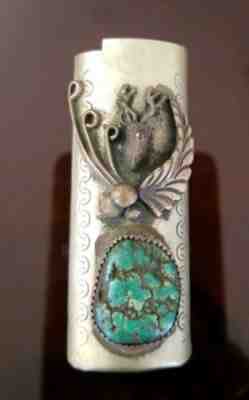
Sold on eBay Nov, 4th 2019
Vintage Sterling Bic Lighter Cover Punch Design Stag Turquois
Vintage Sterling Bic Lighter Cover Punch Design Stag Turquois. Condition is Used. Shipped with USPS First Class Package.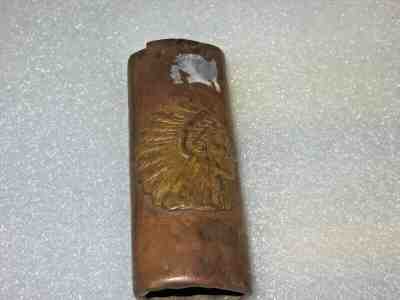
Sold on eBay Feb, 3rd 2020

